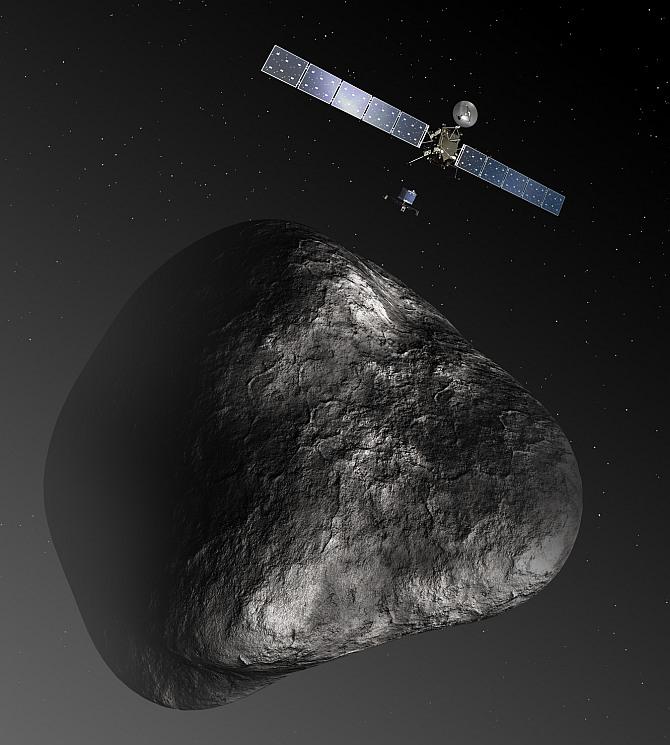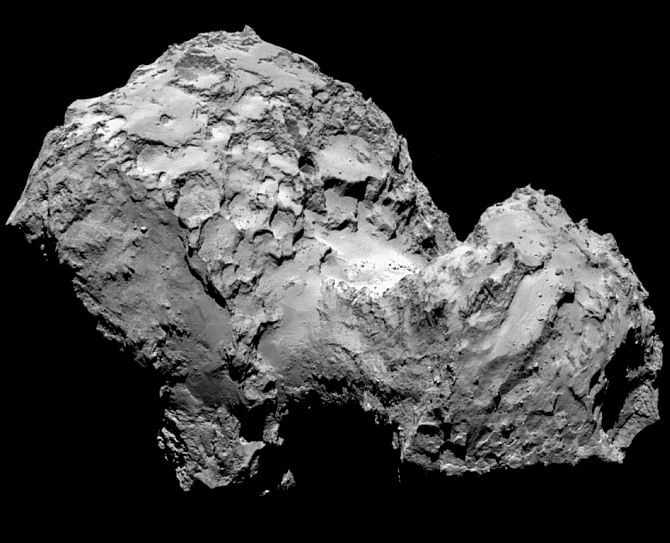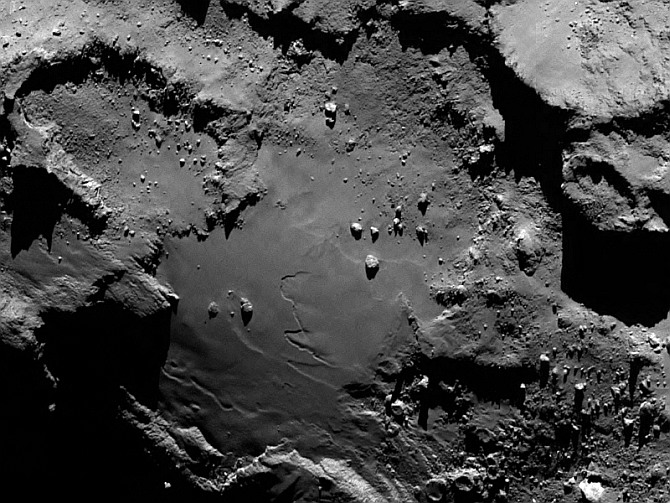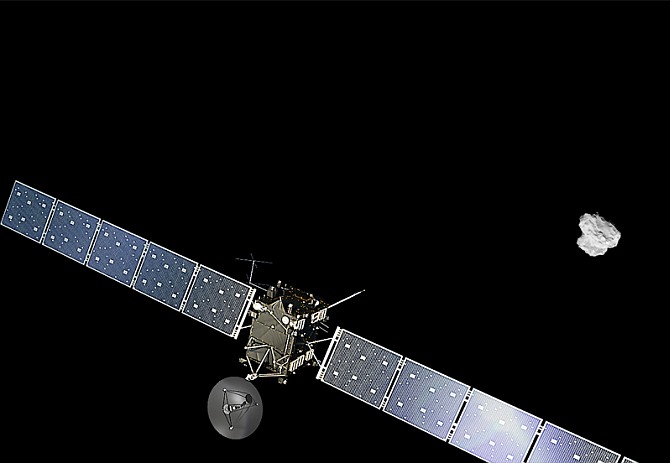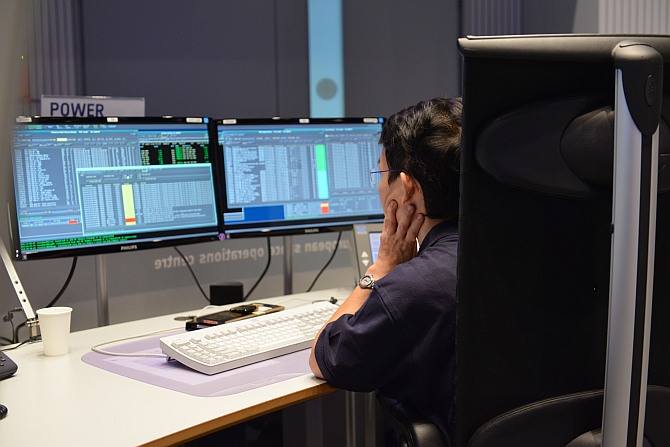 | « Back to article | Print this article |
Comet chaser Rosetta catches up with its target
Ten years after being launched into deep space and clocking billions of miles across the solar system, the Rosetta spacecraft has caught up with comet 67P/Churyumov-Gerasimenko.
Launched by the European Space Agency in 2004, the day marks a new chapter in solar system exploration.
“After ten years, five months and four days travelling towards our destination, looping around the Sun five times and clocking up 6.4 billion kilometres, we are delighted to announce finally ‘we are here’,” said Jean-Jacques Dordain, ESA’s Director General.
“Rosetta is now the first spacecraft in history to rendezvous with a comet, a major highlight in exploring our origins. Discoveries can start.”
Please click NEXT to read more about Rosetta...
Comet chaser Rosetta catches up with its target
Rosetta consists of an orbiter, carrying 11 science experiments, and a lander, called ‘Philae’, carrying 10 additional instruments, for the most detailed study of a comet ever attempted.
Rosetta gets its name from the famous Rosetta stone that led to the deciphering of Egyptian hieroglyphics almost 200 years ago. Similarly, scientists hope that Rosetta will unlock the mysteries of how the solar system evolved.
Rosetta’s launch was originally scheduled for January 2003 on an Ariane-5 rocket.
Rosetta’s target at that time was Comet 46P/Wirtanen, with the encounter planned for 2011. However, following the failure of the first Ariane ECA rocket, in December 2002, ESA and Arianespace took the joint decision not to launch Rosetta during its January 2003 launch window.
This meant that Rosetta’s intended mission to Comet 46P/Wirtanen had to be abandoned.
In May 2003, a new target comet and launch date was selected: the spacecraft was launched in March 2004 and will meet its new target, 67P/Churyumov-Gerasimenko, in 2014.
Please click NEXT to read further...
Comet chaser Rosetta catches up with its target
Rosetta woke up from deep space hibernation at 2318 hours IST on January 20, 2014, nine million kilometres from comet 67P/Churyumov-Gerasimenko.
Following wake-up, the orbiter’s 11 science instruments and 10 lander instruments were reactivated and readied for science observations.
Ten orbital correction manoeuvres were carried out between May 7 and August 6, reducing the spacecraft’s velocity with respect to the comet from 775 m/s to 1 m/s, equivalent to walking pace.
Each of these manoeuvres was critical: if any had failed, no rendezvous would have been possible.
Please click NEXT to read further...
Comet chaser Rosetta catches up with its target
Comet 67P/Churyumov–Gerasimenko and Rosetta now lie 405 million kilometres from Earth, about half way between the orbits of Jupiter and Mars, rushing towards the inner Solar System at nearly 55 000 kilometres per hour.
The comet is in an elliptical 6.5-year orbit that takes it from beyond Jupiter at its furthest point, to between the orbits of Mars and Earth at its closest to the Sun.
Rosetta will accompany it for over a year as they swing around the Sun and back out towards Jupiter again.
Please click NEXT to read further...
Comet chaser Rosetta catches up with its target
Comets are considered to be primitive building blocks of the Solar System and may have helped to ‘seed’ Earth with water, perhaps even the ingredients for life.
But many fundamental questions about these enigmatic objects remain, and through a comprehensive study of the comet, Rosetta aims to unlock the secrets within.
Over the next six weeks, the spacecraft will describe two triangular-shaped trajectories in front of the comet, first at a distance of 100 km and then at 50 km.
At the same time, more of the suite of instruments will provide a detailed scientific study of the comet, scrutinising the surface for a target site for the Philae lander.
Please click NEXT to read further...
Comet chaser Rosetta catches up with its target
Eventually, Rosetta will attempt a close, near-circular orbit at 30 km and, depending on the activity of the comet, perhaps come even closer.
As many as five possible landing sites will be identified by late August, before the primary site is identified in mid-September.
The final timeline for the sequence of events for deploying Philae -- currently expected for November 11 -- will be confirmed by the middle of October.
After landing, Rosetta will continue to accompany the comet until its closest approach to the Sun in August 2015 and beyond, watching its behaviour from close quarters to give us a unique insight and realtime experience of how a comet works as it hurtles around the Sun.
Please click NEXT to read further...
Comet chaser Rosetta catches up with its target
By orbiting Comet 67P/Churyumov-Gerasimenko and landing on it, Rosetta will allow us to reconstruct the history of our own neighbourhood in space.
Rosetta will also help to discover whether comets contributed to the beginnings of life on Earth.
Comets are carriers of complex organic molecules, delivered to Earth through impacts, and perhaps played a role in the origin of life.
Moreover, volatile light elements carried by comets may also have played an important role in forming Earth’s oceans and atmosphere.
Click MORE to see another photo feature...
